Part 20: December 29 Broadcast

You are listening to BBC radio 4. In an hour, we’ll be talking about the origins of the Julian calendar, and why the New Year takes place on the day it does. . For the next hour, Professor David Stephenson will be presenting a documentary on the second 80 years war of the eighteenth century. This series will be running every third day, up to 50 episodes. If you want news of the current war in the Middle East please channel in to BBC radio 1.
 Good evening, and welcome to BBC radio 4. I’m Professor David Stephenson, professor of Dutch historical studies at Cambridge. This is the twentieth part of our 50 episode special on the second 80 years war over Europe. Joining me for these broadcasts are fellow researchers and scholars Doctor Albert Andrews, specialist in German studies from the Berlin academy, Professor Robert Lowe, specialist in French studies at Cambridge, and a graduate student and technical assistant, Anton Thatcher. Last week, we discussed the advances and preparations the Dutch had made for their final pushes towards victory abroad, hoping to free their forces for a victory at home.
Good evening, and welcome to BBC radio 4. I’m Professor David Stephenson, professor of Dutch historical studies at Cambridge. This is the twentieth part of our 50 episode special on the second 80 years war over Europe. Joining me for these broadcasts are fellow researchers and scholars Doctor Albert Andrews, specialist in German studies from the Berlin academy, Professor Robert Lowe, specialist in French studies at Cambridge, and a graduate student and technical assistant, Anton Thatcher. Last week, we discussed the advances and preparations the Dutch had made for their final pushes towards victory abroad, hoping to free their forces for a victory at home. And in India, it seemed the Dutch victory over the Maratha was a foregone conclusion. In reality, without a comeback of equal significance, the Maratha had lost India to the Dutch after the battle of Nikolaes’ ridge back in 1720. By breaking the back of the Maratha resistance with so little, the Dutch had been able to repel the early mass of Maratha troops while simultaneously reinforcing their own position to the point that they could not be pushed back out of India. Had they lost at Goa, the Dutch would surely have been pushed back out of India by the tremendous press of the early Maratha armies.
And in India, it seemed the Dutch victory over the Maratha was a foregone conclusion. In reality, without a comeback of equal significance, the Maratha had lost India to the Dutch after the battle of Nikolaes’ ridge back in 1720. By breaking the back of the Maratha resistance with so little, the Dutch had been able to repel the early mass of Maratha troops while simultaneously reinforcing their own position to the point that they could not be pushed back out of India. Had they lost at Goa, the Dutch would surely have been pushed back out of India by the tremendous press of the early Maratha armies.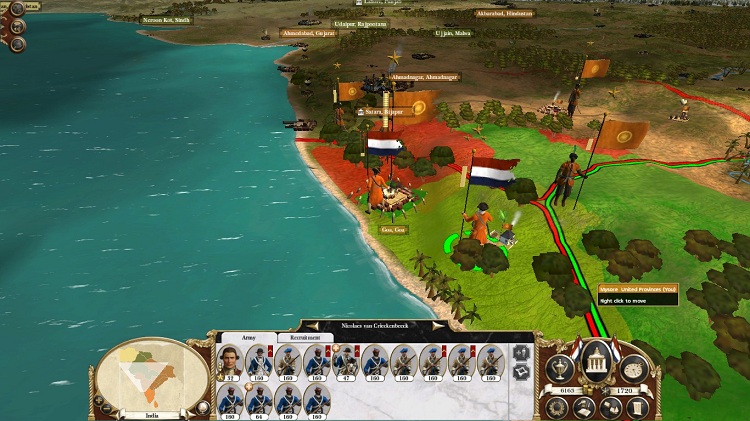
The Battle of Nikolaes' Ridge was the most decisive of the war.
 From that point forward, the demise of the Maratha was slow and inexorable. Every season, the Dutch had grown stronger and greater in number, while the Maratha were being pushed back. Funded by the tens of millions of guilders taken from the home theater in Europe, the Maratha could not hope to afford that slow form of attrition.
From that point forward, the demise of the Maratha was slow and inexorable. Every season, the Dutch had grown stronger and greater in number, while the Maratha were being pushed back. Funded by the tens of millions of guilders taken from the home theater in Europe, the Maratha could not hope to afford that slow form of attrition.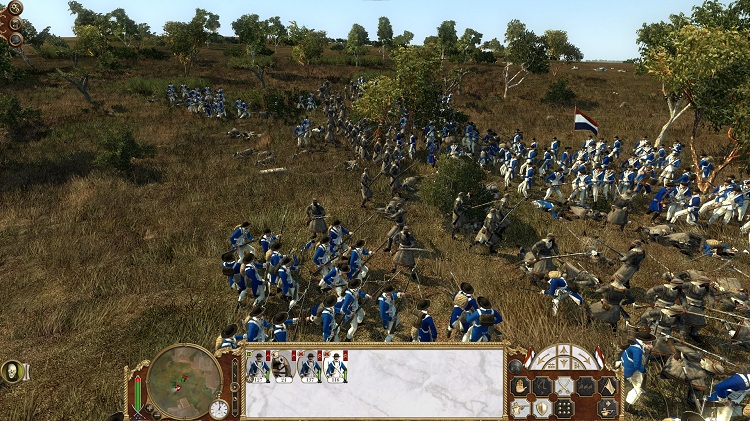
Dutch forces kept sharp through constant patrols. These patrols had the additional benefit of stopping the Maratha from keeping their forces up to strength.
 By 1737, the Dutch had such an advantage over the Maratha that they had begun planning for a post war evacuation of men and materiel to the European theater so as to defeat the British, or perhaps counter Polish aggression.
By 1737, the Dutch had such an advantage over the Maratha that they had begun planning for a post war evacuation of men and materiel to the European theater so as to defeat the British, or perhaps counter Polish aggression. And that aggression was made most notably manifest throughout the latter half of the 1730s and the early 1740s. Those decades became known as the years of “peace through payment” to the Dutch. They had twice paid the Poles over three million guilders, paid Venice two million guilders and the Italian States four million guilders to remain at peace in Europe. They had even sent those nations millions of guilders in patents in reparations to keep the peace. With nervous generals and troops spread thin, the Dutch were not willing to risk war in Europe at the time. That would turn once the Dutch had returned from India.
And that aggression was made most notably manifest throughout the latter half of the 1730s and the early 1740s. Those decades became known as the years of “peace through payment” to the Dutch. They had twice paid the Poles over three million guilders, paid Venice two million guilders and the Italian States four million guilders to remain at peace in Europe. They had even sent those nations millions of guilders in patents in reparations to keep the peace. With nervous generals and troops spread thin, the Dutch were not willing to risk war in Europe at the time. That would turn once the Dutch had returned from India.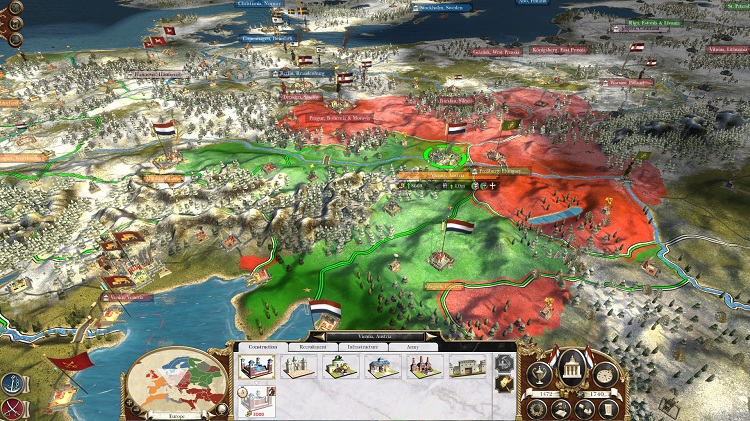
The Dutch were intimidated by the massive land armies in Poland.
 Nikolaes van Crieckenbeeck, the field marshal of the Dutch in India, and the tactical hero of the battle of Nikolaes ridge, was one of the few generals brave enough to commit his forces to action, but he found his talents in India wasted. He wished to return to Europe as fast as possible to win greater acclaim by taking London, a task that the generals in Amsterdam were too cowardly to accomplish. Impatient, but not to the point of recklessness, Crieckenbeeck’s armies moved forward under meticulous orders across multiple provinces. To the East, the Dutch had observed that Akbarabad and Calcutta were sparsely defended, while the Massed brunt of the Maratha’s best troops had been saved for a strong push down the West coast through Satara.
Nikolaes van Crieckenbeeck, the field marshal of the Dutch in India, and the tactical hero of the battle of Nikolaes ridge, was one of the few generals brave enough to commit his forces to action, but he found his talents in India wasted. He wished to return to Europe as fast as possible to win greater acclaim by taking London, a task that the generals in Amsterdam were too cowardly to accomplish. Impatient, but not to the point of recklessness, Crieckenbeeck’s armies moved forward under meticulous orders across multiple provinces. To the East, the Dutch had observed that Akbarabad and Calcutta were sparsely defended, while the Massed brunt of the Maratha’s best troops had been saved for a strong push down the West coast through Satara. 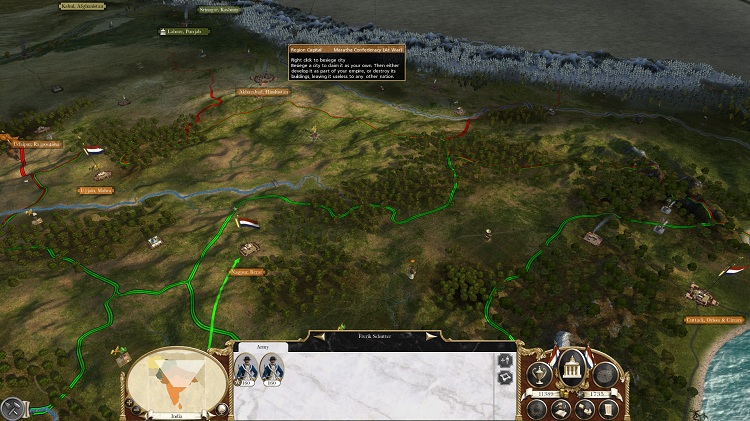
The Dutch strategy was to sweep through the Maratha East flank, letting them concentrate their entire force into the small remaining Maratha fortresses.
 Crieckenbeeck committed his first army north to Akbarabad, hoping to quickly take the city and cut Calcutta off from the brunt of the Maratha forces allowing a much smaller force to besiege and starve out the forces in Calcutta. Using his own forces around Bijapur in the west, Crieckenbeeck hoped to forestall and destroy enough of the Maratha forces that by the time Calcutta had fallen, he could move his forces around Calcutta to police Akbarabad, assault Rajpootana with the forces from Akbarabad, after which his forces could easily surround and overwhelm the remaining Maratha forces.
Crieckenbeeck committed his first army north to Akbarabad, hoping to quickly take the city and cut Calcutta off from the brunt of the Maratha forces allowing a much smaller force to besiege and starve out the forces in Calcutta. Using his own forces around Bijapur in the west, Crieckenbeeck hoped to forestall and destroy enough of the Maratha forces that by the time Calcutta had fallen, he could move his forces around Calcutta to police Akbarabad, assault Rajpootana with the forces from Akbarabad, after which his forces could easily surround and overwhelm the remaining Maratha forces.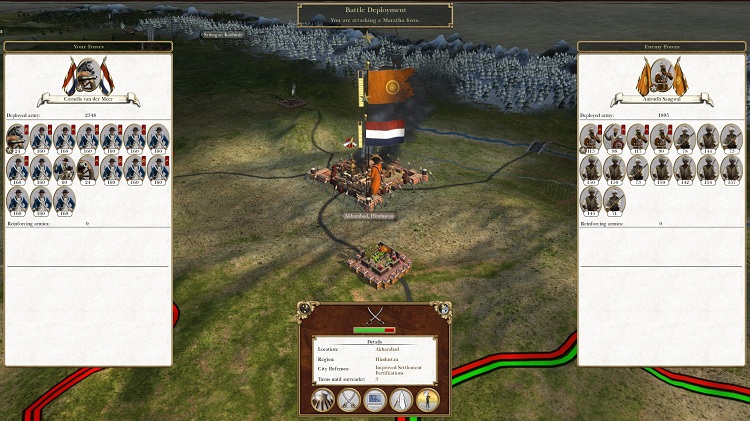
The first Dutch assault was towards Akbarabad, cutting Calcutta off from the remainder of the Maratha forces.
 As he was the only general that was available in the theater, he had to allow a great deal of autonomy to his colonels and to his staff officers. It was a testament to their twenty years of experience in India in a state of constant warfare that the Dutch held together and to the plan with such limited leadership over so broad an area. Many of the troops, either veterans of dozens of battles and patrols, or attached to units with long and proud histories in India performed with great motivation and spirit even without the presence of their general.
As he was the only general that was available in the theater, he had to allow a great deal of autonomy to his colonels and to his staff officers. It was a testament to their twenty years of experience in India in a state of constant warfare that the Dutch held together and to the plan with such limited leadership over so broad an area. Many of the troops, either veterans of dozens of battles and patrols, or attached to units with long and proud histories in India performed with great motivation and spirit even without the presence of their general. This plan was guided partly through the disposition of men through India. In the East, the Maratha had little cavalry, Hindu militia, and armed citizens. All told, the Akbarabad and Calcutta garrisons numbered perhaps three thousand men, and none of particularly reliable quality. In the west, the Maratha had mustered nearly six thousand men, many of which were the elite Sikh warriors, Western trained Barghir, and only very few militia. Their artillery was primarily the fixed mortar, a weapon that outranged anything the Dutch could field in India and capable of firing deadly carcass shot, which had migrated through Dutch technology to the Ottomans, to the Persians, to the Maratha.
This plan was guided partly through the disposition of men through India. In the East, the Maratha had little cavalry, Hindu militia, and armed citizens. All told, the Akbarabad and Calcutta garrisons numbered perhaps three thousand men, and none of particularly reliable quality. In the west, the Maratha had mustered nearly six thousand men, many of which were the elite Sikh warriors, Western trained Barghir, and only very few militia. Their artillery was primarily the fixed mortar, a weapon that outranged anything the Dutch could field in India and capable of firing deadly carcass shot, which had migrated through Dutch technology to the Ottomans, to the Persians, to the Maratha.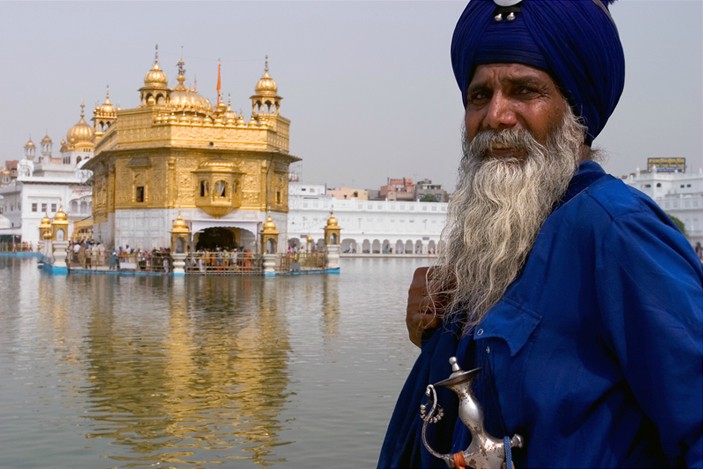
The Sikh warriors were part of a religion that had traditionally been a martial culture. Their warriors were proud and courageous, representing the best the Maratha had left.
 The Dutch were much more homogeneous, with five thousand five hundred men capable of acting in the west, and three thousand five hundred advancing forward in the east. These armies were almost entirely company men, inferior to both the Barghir and Sikh warriors, and backed by weak company cavalry, they would have to rely on terrain, tactics and a sweep through the weak point of the Maratha eastern armies to provide overwhelming force. The Dutch were using the shorter ranged howitzers, but would advance from using the carcass shot to the more deadly and reliable quicklime shot at the tail end of the advance, one of the first instances of chemical warfare to date.
The Dutch were much more homogeneous, with five thousand five hundred men capable of acting in the west, and three thousand five hundred advancing forward in the east. These armies were almost entirely company men, inferior to both the Barghir and Sikh warriors, and backed by weak company cavalry, they would have to rely on terrain, tactics and a sweep through the weak point of the Maratha eastern armies to provide overwhelming force. The Dutch were using the shorter ranged howitzers, but would advance from using the carcass shot to the more deadly and reliable quicklime shot at the tail end of the advance, one of the first instances of chemical warfare to date.
The early howitzer. By shortening the barrel and decreasing the powder charge, engineers created a weapon that fired in an arch With standard projectiles, this would render the weapon near useless, but with detonating munitions, the howitzer made for an excellent anti-personnel artillery piece.
 Quicklime shells were hollowed spheres of metal loaded with powdered calcium oxide and an explosive charge. When the shell detonated, it would spread a debilitating cloud of quicklime dust that burned the throat and eyes of those who came in contact with it. Calcium oxide reacted strongly with water, and so the moisture in one’s throat and eyes caused a painful and terrifying chemical reaction. The dust from the calcium oxide lingering far longer than the flames from carcass shells meant the Dutch had phased out the carcass in favour of the quicklime. This would be shipped and produced through the Dutch empire by 1740.
Quicklime shells were hollowed spheres of metal loaded with powdered calcium oxide and an explosive charge. When the shell detonated, it would spread a debilitating cloud of quicklime dust that burned the throat and eyes of those who came in contact with it. Calcium oxide reacted strongly with water, and so the moisture in one’s throat and eyes caused a painful and terrifying chemical reaction. The dust from the calcium oxide lingering far longer than the flames from carcass shells meant the Dutch had phased out the carcass in favour of the quicklime. This would be shipped and produced through the Dutch empire by 1740.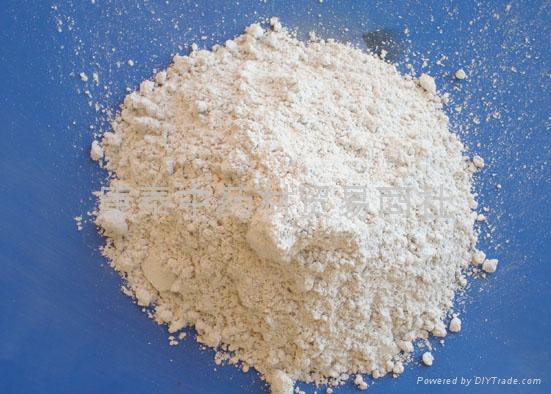
Calcium oxide.
 With the theater carefully analyzed, the Dutch moved their forces out. The first force assaulted the fortifications around Akbarabad in 1738. The Dutch, using light 6 pound cannon and carcass shot firing howitzers found themselves unable to breach the Maratha walls, forcing them into a charge on the Maratha walls. Finding minimal resistance on the walls, they claimed the gate houses and advanced into the courtyard.
With the theater carefully analyzed, the Dutch moved their forces out. The first force assaulted the fortifications around Akbarabad in 1738. The Dutch, using light 6 pound cannon and carcass shot firing howitzers found themselves unable to breach the Maratha walls, forcing them into a charge on the Maratha walls. Finding minimal resistance on the walls, they claimed the gate houses and advanced into the courtyard.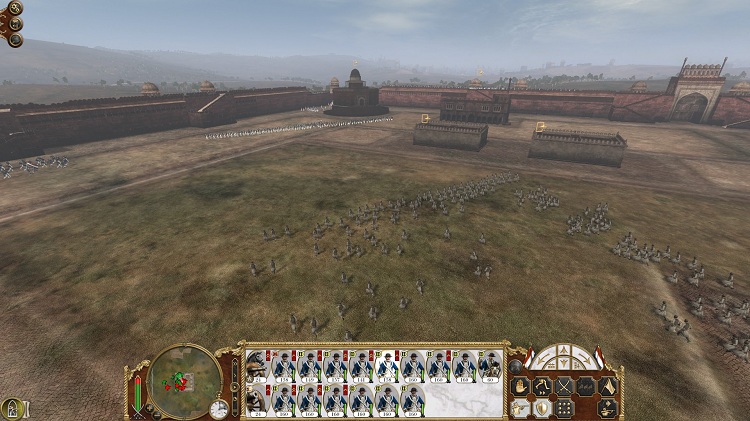
Dutch take the walls and advance into the interior of the fortress.
 As the infantry were advancing, the Dutch howitzers fired over the walls onto the massed Maratha forces. The flaming projectiles caused havoc on the Maratha forces that were clumped up in the fortress walls. Flaming carcass shells burned to death dozens of defenders before they could spread out.[/i]
As the infantry were advancing, the Dutch howitzers fired over the walls onto the massed Maratha forces. The flaming projectiles caused havoc on the Maratha forces that were clumped up in the fortress walls. Flaming carcass shells burned to death dozens of defenders before they could spread out.[/i]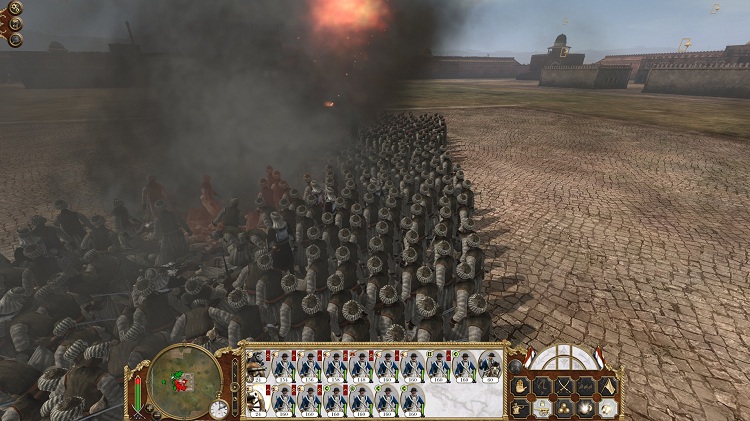
Carcass shots raining down on the Maratha.
 Between the Dutch forces pouring into the fortress, and the masses of men dying to the flames of the carcass shot, the Maratha looked to be in a bad place. They had managed to charge the Dutch infantry before they could be arranged in a firing line, with the sword armed Maratha peasants fighting with the desperation of dead men. The V.O.C. having failed to fire a volley into the Maratha peasants, the Dutch were forced to mass their men to overwhelm the Maratha infantry causing an absolutely horrible melee around the walls.
Between the Dutch forces pouring into the fortress, and the masses of men dying to the flames of the carcass shot, the Maratha looked to be in a bad place. They had managed to charge the Dutch infantry before they could be arranged in a firing line, with the sword armed Maratha peasants fighting with the desperation of dead men. The V.O.C. having failed to fire a volley into the Maratha peasants, the Dutch were forced to mass their men to overwhelm the Maratha infantry causing an absolutely horrible melee around the walls.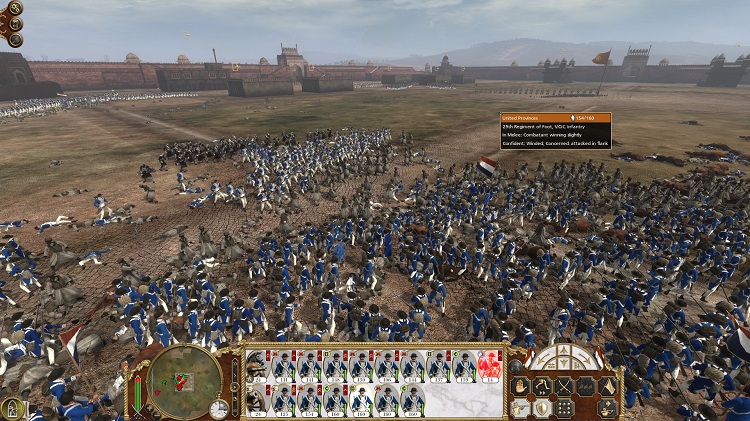
Maratha forces counter charge the Dutch that had gone over the walls while under artillery fire.
 However, the Dutch had brought enough numbers that even with enough men bogged down in melee with the Maratha peasants, several more battalions had crept over the walls around the side, forming a firing line against the colonel and his musket men leading the Maratha, letting them capture the fortress center. After minutes of desperate fighting, the Maratha had to concede, it being clear that the fortress was under V.O.C. control.
However, the Dutch had brought enough numbers that even with enough men bogged down in melee with the Maratha peasants, several more battalions had crept over the walls around the side, forming a firing line against the colonel and his musket men leading the Maratha, letting them capture the fortress center. After minutes of desperate fighting, the Maratha had to concede, it being clear that the fortress was under V.O.C. control.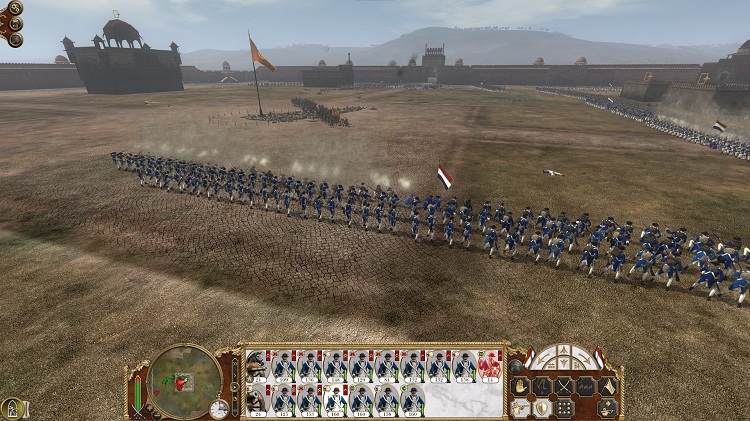
Dutch overwhelming numbers let them commit several battalions to a melee, while others captured the fort.
 Akbarabad, easily falling to Dutch control anchored the Dutch east by providing a strong fortress blocking the western forces from stopping the capture of Calcutta, which would completely eliminate any threat along the Dutch eastern flank, letting them focus their entire presence on the tiny frontage remaining for the Maratha in the west.
Akbarabad, easily falling to Dutch control anchored the Dutch east by providing a strong fortress blocking the western forces from stopping the capture of Calcutta, which would completely eliminate any threat along the Dutch eastern flank, letting them focus their entire presence on the tiny frontage remaining for the Maratha in the west.
The Dutch coveted Akbarabad not only for its strategic position. They had been eyeing the region for years for the wealth of the many industrial cities.
 Following up with the assault to Akbarabad, the Dutch moved their second army to Calcutta, but the Maratha were desperate now. Forced to move out, the Dutch were forced to fight the Maratha armies along the west at Bombay, and then at Ujjain. Having given up on both Akbarabad and Calcutta, the Maratha had hoped to break the Dutch at Ujjain and Satara before turning to defend against the Dutch coming from Akbarabad.
Following up with the assault to Akbarabad, the Dutch moved their second army to Calcutta, but the Maratha were desperate now. Forced to move out, the Dutch were forced to fight the Maratha armies along the west at Bombay, and then at Ujjain. Having given up on both Akbarabad and Calcutta, the Maratha had hoped to break the Dutch at Ujjain and Satara before turning to defend against the Dutch coming from Akbarabad.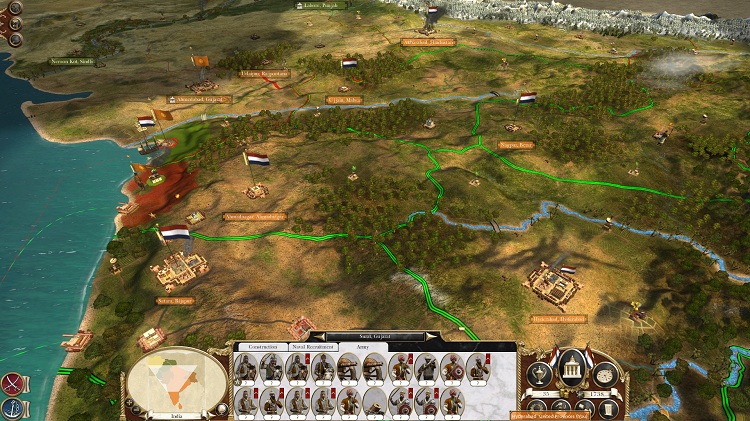
Neither the Dutch nor the Maratha truly wanted to engage at the time, but the Maratha no longer had any choice but to attack, forcing the Dutch to move to defend.
 Crieckenbeeck personally turned his force to the Maratha army that had sacked the port city of Bombay in 1739, moving his forces to a breakthrough of the Maratha lines. If he was capable of defeating the Maratha decisively enough, he would be in a solid position to move damaged battalions back to garrison Satara while moving forward with enough strength to defeat the Maratha at Gujarat.
Crieckenbeeck personally turned his force to the Maratha army that had sacked the port city of Bombay in 1739, moving his forces to a breakthrough of the Maratha lines. If he was capable of defeating the Maratha decisively enough, he would be in a solid position to move damaged battalions back to garrison Satara while moving forward with enough strength to defeat the Maratha at Gujarat.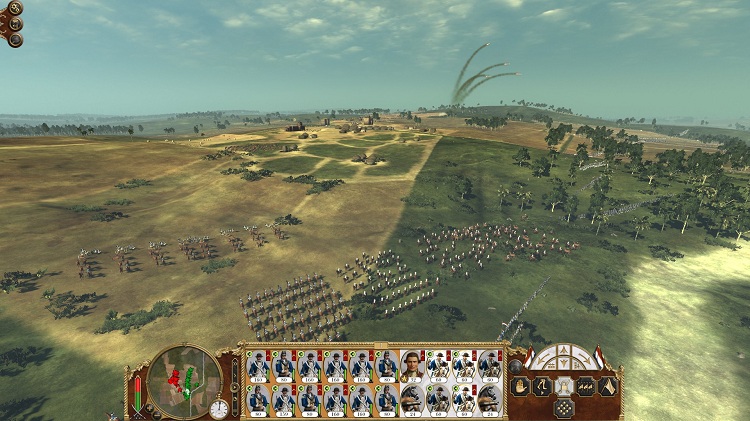
Crieckenbeeck and his cavalry at the battle of Bombay. The Maratha were firing at the Dutch for much of the battle from afar with their mortar.
 Under the direct command of Crieckenbeeck, the V.O.C., with their elite grenadiers, massive numbers and artillery easily swept over the Maratha forces. Grenadiers smashed through the left flank of the Maratha forces, killing the Sikh warriors as though they were new recruits. Cavalry ran rampant through the back of the Maratha army, disorganizing them and causing mass panic and confusion. Crieckenbeeck had completely outclassed the Maratha at Bombay.
Under the direct command of Crieckenbeeck, the V.O.C., with their elite grenadiers, massive numbers and artillery easily swept over the Maratha forces. Grenadiers smashed through the left flank of the Maratha forces, killing the Sikh warriors as though they were new recruits. Cavalry ran rampant through the back of the Maratha army, disorganizing them and causing mass panic and confusion. Crieckenbeeck had completely outclassed the Maratha at Bombay.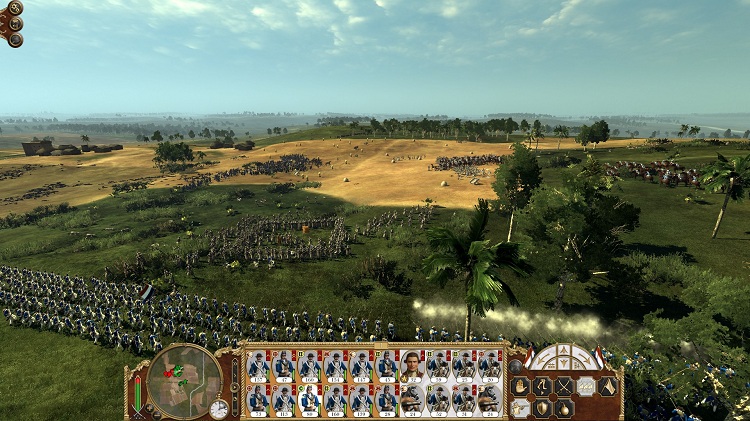
Crieckenbeeck had his forces attack from all angles. The Maratha were reduced to a confused mass trying to defend against attacks at all angles. It did not take long for these forces to break, only to be run down by swarms of cavalry.
 The company cavalry that had accompanied Crieckenbeeck’s army allowed the Dutch far better capacity in running down the retreating Maratha forces than had traditionally been possible. Normally, as the V.O.C. cavalry could not compete with the Maratha forces. However, with the Dutch capable of bringing sheer numbers to the fore, the infantry line often stretched far beyond the limit of the Maratha lines, even after folding across their flanks. With their limited mobility, this often meant the Dutch infantry were simply lumped in tighter formations. By reducing the line slightly, and increasing their cavalry compliment, the Dutch were better able to capitalize on their victories.
The company cavalry that had accompanied Crieckenbeeck’s army allowed the Dutch far better capacity in running down the retreating Maratha forces than had traditionally been possible. Normally, as the V.O.C. cavalry could not compete with the Maratha forces. However, with the Dutch capable of bringing sheer numbers to the fore, the infantry line often stretched far beyond the limit of the Maratha lines, even after folding across their flanks. With their limited mobility, this often meant the Dutch infantry were simply lumped in tighter formations. By reducing the line slightly, and increasing their cavalry compliment, the Dutch were better able to capitalize on their victories.
Dutch cavalry running down the Barghir.
 Dutch from Nagpur and Ujjain moved out to intercept the second Maratha army. These armies were far inferior to the one Crieckenbeeck had elected to lead himself, but had a tremendous advantage in numbers, equaling over three thousand men. The Maratha, having two thirds their numbers had superior infantry, and were supported by artillery and cavalry, whereas the Dutch had consisted entirely of infantry. Intended to be a garrison force, if Crieckenbeeck wanted to leap his forces forward, he would need to eliminate the Maratha near Ujjain lest they double back to take Satara undefended. He trusted the Maratha and V.O.C. company infantry to defeat the more balanced Maratha forces.[/i]
Dutch from Nagpur and Ujjain moved out to intercept the second Maratha army. These armies were far inferior to the one Crieckenbeeck had elected to lead himself, but had a tremendous advantage in numbers, equaling over three thousand men. The Maratha, having two thirds their numbers had superior infantry, and were supported by artillery and cavalry, whereas the Dutch had consisted entirely of infantry. Intended to be a garrison force, if Crieckenbeeck wanted to leap his forces forward, he would need to eliminate the Maratha near Ujjain lest they double back to take Satara undefended. He trusted the Maratha and V.O.C. company infantry to defeat the more balanced Maratha forces.[/i]
Dutch infantry and militia try to force back the Maratha.
 The Dutch were immediately bombarded as they advanced by carcass shot fired from Maratha mortars, taking horrendous casualties as they attempted to come to grips with their foe. Their line doubling past the Maratha line, the Maratha counter charged the Dutch forces rather than let them form into a firing line that enveloped around their flanks. In melee combat, numbers would count for less, as the Dutch could not fire by rank, and individual skill with the bayonet would amount to more when men could both attack and defend with his weapon and skill.
The Dutch were immediately bombarded as they advanced by carcass shot fired from Maratha mortars, taking horrendous casualties as they attempted to come to grips with their foe. Their line doubling past the Maratha line, the Maratha counter charged the Dutch forces rather than let them form into a firing line that enveloped around their flanks. In melee combat, numbers would count for less, as the Dutch could not fire by rank, and individual skill with the bayonet would amount to more when men could both attack and defend with his weapon and skill.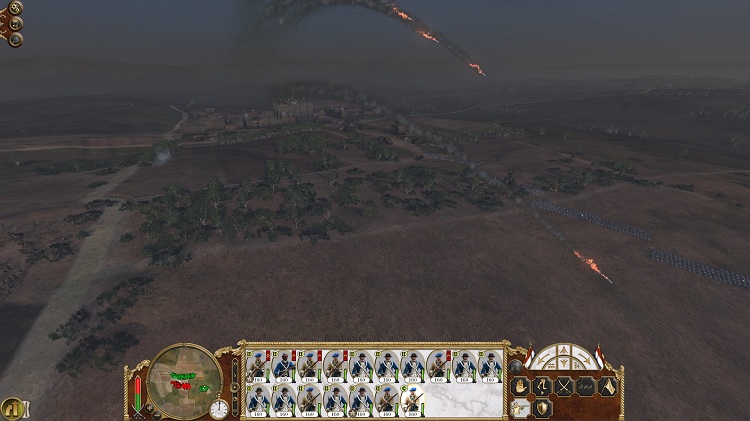
Maratha mortar fire lights up the evening sky.
 The Dutch used this opportunity to run their infantry into the Maratha guns, using loose or uncommitted forces to destroy the Maratha artillery, ending the constant barrage of artillery fire. Once the artillery had been destroyed, remaining uncommitted Maratha and Dutch forces retreated back to reorganize their lines somewhat. The Dutch, assessing that their line was now over ten times the size of the remaining Maratha, moved into columns to allow superior speed and manoeuvrability. Able to get into position rapidly, the Dutch were able to outgun the last few remaining Maratha. Without any means to run down escaping Maratha infantry, the Dutch were forced to watch as a thousand enemy infantry escaped from the battlefield.
The Dutch used this opportunity to run their infantry into the Maratha guns, using loose or uncommitted forces to destroy the Maratha artillery, ending the constant barrage of artillery fire. Once the artillery had been destroyed, remaining uncommitted Maratha and Dutch forces retreated back to reorganize their lines somewhat. The Dutch, assessing that their line was now over ten times the size of the remaining Maratha, moved into columns to allow superior speed and manoeuvrability. Able to get into position rapidly, the Dutch were able to outgun the last few remaining Maratha. Without any means to run down escaping Maratha infantry, the Dutch were forced to watch as a thousand enemy infantry escaped from the battlefield.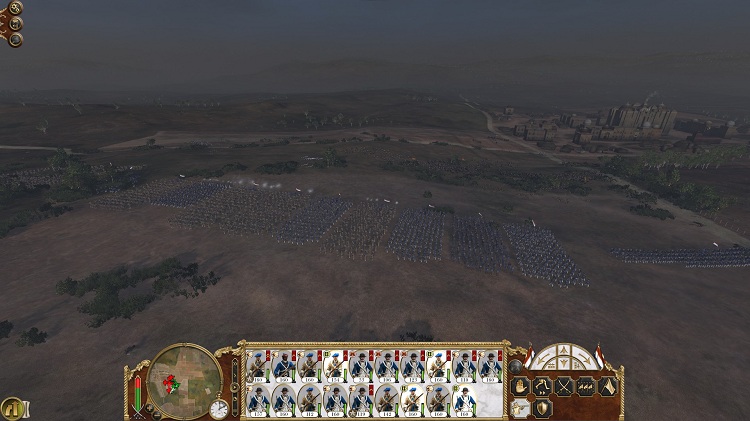
Dutch fighting from columns. A column was easier to manuever on the battlefield than a line. Armies often deployed in column to move, but arranged into lines to fight.
 These infantry retreated to tea fields north of Bombay, and were intercepted by the Dutch as they tried to pursue the few remnants of the battle of Bombay. The remains of these two battles, as well as the Ahmedabad garrison tried to consolidate and slow or halt the advance of the Dutch. Crieckenbeeck, slowed by his need to reorganize his forces into separate garrison and offensive battalions was delayed, and so he and his army was absent, leaving his secondary army to bound forward as intended. However, unlike the army under Crieckenbeeck, this second army had no general, no grenadiers, and less cavalry, making it all in all a weaker one.
These infantry retreated to tea fields north of Bombay, and were intercepted by the Dutch as they tried to pursue the few remnants of the battle of Bombay. The remains of these two battles, as well as the Ahmedabad garrison tried to consolidate and slow or halt the advance of the Dutch. Crieckenbeeck, slowed by his need to reorganize his forces into separate garrison and offensive battalions was delayed, and so he and his army was absent, leaving his secondary army to bound forward as intended. However, unlike the army under Crieckenbeeck, this second army had no general, no grenadiers, and less cavalry, making it all in all a weaker one.
The Dutch intercept Maratha forces attempting to reform north of Bombay.
 Setting up in a strong position to bombard the Maratha forces, the Dutch had put to use their first ever rifle battalions. A rifle is a gun with grooves cut into the barrel that caused the bullet to spin, allowing for greater range and stability. The grooves however, were only effective with a tightly fitted bullet, meaning a rifle took longer to load, and required far better standardization of both bullet production and barrel construction. With the machine precise tools used by the Dutch, they had managed to put a rare, handmade and expensive hunting item into a full scale weapon of war. The smoothbore musket was still preferred however, as the rifle took over twice as long to reload on the field, meaning the riflemen were limited to a few marksmen and sharpshooters, meant to cause a bit of damage from beyond smoothbore range, and to eliminate officers or other high priority targets.
Setting up in a strong position to bombard the Maratha forces, the Dutch had put to use their first ever rifle battalions. A rifle is a gun with grooves cut into the barrel that caused the bullet to spin, allowing for greater range and stability. The grooves however, were only effective with a tightly fitted bullet, meaning a rifle took longer to load, and required far better standardization of both bullet production and barrel construction. With the machine precise tools used by the Dutch, they had managed to put a rare, handmade and expensive hunting item into a full scale weapon of war. The smoothbore musket was still preferred however, as the rifle took over twice as long to reload on the field, meaning the riflemen were limited to a few marksmen and sharpshooters, meant to cause a bit of damage from beyond smoothbore range, and to eliminate officers or other high priority targets.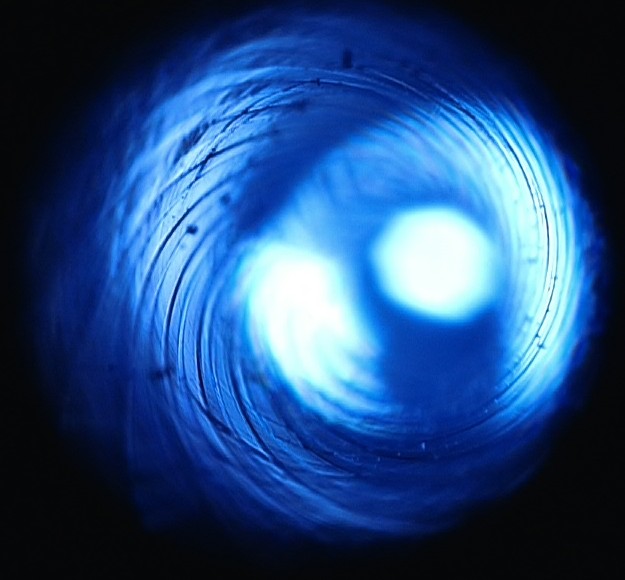
The interior of a rifle. The grooves required precise machines to create.
 These riflemen had set up in a light infantry formation in front of the Dutch lines, using sharpened wooden stakes to protect them from a frontal cavalry charge. Trained to fight in concert with standard line infantry, skirmishers knew how to avoid being shot in the back by their own men, standing to fire only when the commands of the officers behind them had cleared them to fire. Adding their accurate and deadly fire to the line infantry fire, they were capable of adding a great deal of weight to the line infantry’s volleys. The remainder of the line was arranged as normal, with artillery behind.
These riflemen had set up in a light infantry formation in front of the Dutch lines, using sharpened wooden stakes to protect them from a frontal cavalry charge. Trained to fight in concert with standard line infantry, skirmishers knew how to avoid being shot in the back by their own men, standing to fire only when the commands of the officers behind them had cleared them to fire. Adding their accurate and deadly fire to the line infantry fire, they were capable of adding a great deal of weight to the line infantry’s volleys. The remainder of the line was arranged as normal, with artillery behind.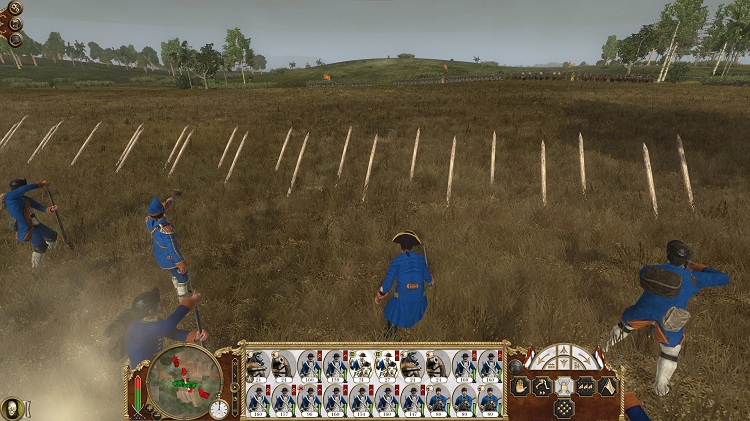
The Dutch riflemen deployed in a scattered, slouched formation allowing the line infantry to fire from behind them.
 With fire raining down on the Maratha lines, they were forced to advance. Their cavalry managed to gain the Dutch right flank, but were repelled by the Dutch squares, and then chased from the field by a Dutch cavalry counter charge.
With fire raining down on the Maratha lines, they were forced to advance. Their cavalry managed to gain the Dutch right flank, but were repelled by the Dutch squares, and then chased from the field by a Dutch cavalry counter charge.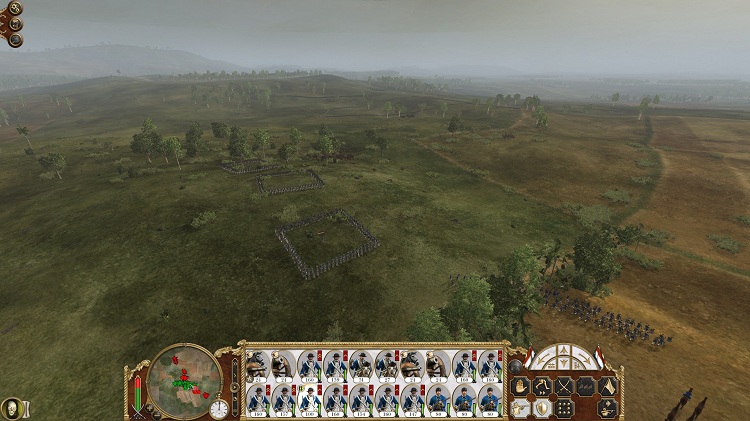
The Dutch arrayed in squares to counter the onrushing Maratha cavalry. The Maratha tried to disengage, but were intercepted by the Dutch V.O.C. cavalry.
 Simultaneously, the Maratha advanced their infantry, and were dashed to pieces by a combination of rifle, smoothbore and carcass shot. The sheer concentration of fire the V.O.C. brought to bear on the Maratha center made the collapse immediate, destroying much of the remaining Maratha forces and clearing their way to the last of the Maratha strongholds. The Dutch had won India. All that was left was to take it.
Simultaneously, the Maratha advanced their infantry, and were dashed to pieces by a combination of rifle, smoothbore and carcass shot. The sheer concentration of fire the V.O.C. brought to bear on the Maratha center made the collapse immediate, destroying much of the remaining Maratha forces and clearing their way to the last of the Maratha strongholds. The Dutch had won India. All that was left was to take it.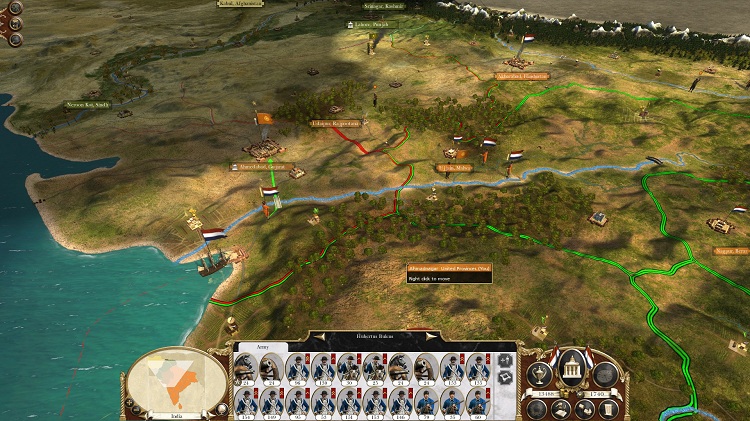
The Dutch had already conquered the Maratha. There was nothing they could do now to stop them.
Next, we will be talking about the origins of the Julian calendar. After, we will be discussing the most elaborate New Year’s celebrations in Britain. World news has been moved back an hour for today and for the rest of the Christmas season. If you want news of the current war in the Middle East please channel in to BBC radio 1. David Stephenson will be presenting more on the 80 years war January fourth.